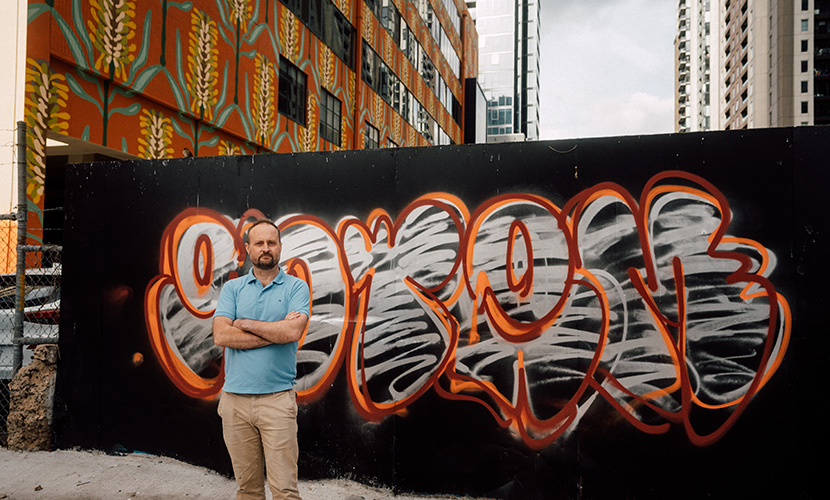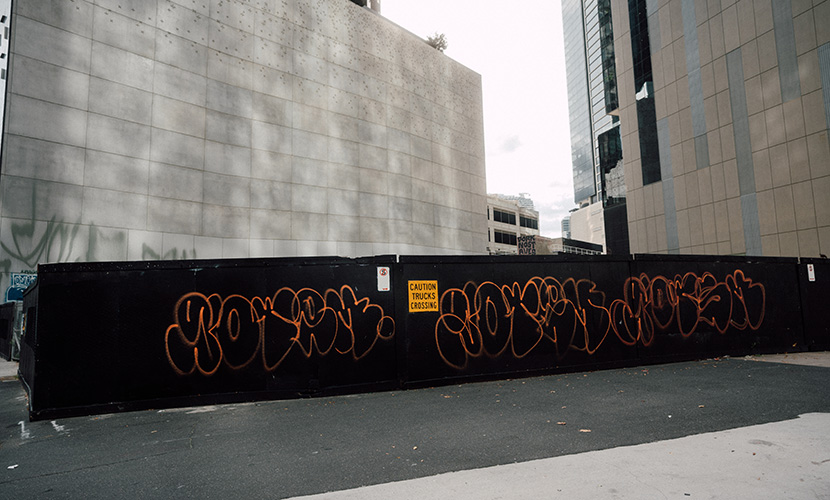
Graffiti clean-up welcomed, but council concedes blitz is not enough
The City of Melbourne has stepped up its fight against graffiti with residents reporting a noticeable difference to Southbank following a major blitz across the city in March.
It comes as the council battles to fight a 60 per cent increase in graffiti and tagging since the pandemic began – with councillors voting at their April 26 meeting to seek the “urgent assistance” of the state government to help combat the vandalism scourge.
The blitz saw clean-up crews hit the streets of the Southbank, Docklands, South Wharf, and Hoddle Grid areas as the council aimed to improve public spaces and ensure the city was clean as workers, students and visitors return.
Among the areas targeted in Southbank was 400 square metres of graffiti which was removed from a wall at 26 Power St – equivalent to the size of more than two tennis courts, while 300 square metres of graffiti were taken down at 56-58 Clarendon St, both of which were private property.
The average time between graffiti being reported and cleaned was five days – a 70 per cent reduction compared to January.
Southbank Residents’ Association (SRA) Tony Penna said the council’s measure of posting QR codes around the city to encourage residents and visitors to report graffiti had been “very efficient.”
“People who have used QR codes to report graffiti have reported that the graffiti has been removed within days; my personal experience has been very efficient,” he said.
“The QR codes on the rubbish bins are working – once it’s reported the graffiti is gone very quickly.”
However, Mr Penna acknowledged that cleaning graffiti was costly, and “needs to probably be tackled first and foremost by the state government because it’s a law-and-order issue.”
But he added, “the City of Melbourne is doing its best in trying to address it, and I think they’ve done a pretty good job from my experience.”
Southbank 3006 residents’ group spokesman David Hamilton said the blitz had made a “definite impact” on the local area.
“When people see a speedy response from the council they will participate and report,” he said.
This confirms that the Lord Mayor’s commitment to make council service local and accountable is the correct strategy for Southbank. We need more of it across all council departments.
However, he said while QR codes “makes it simpler, faster, and easier for people to report, it needs to be backed with an education and awareness program to encourage reporting.”
Lord Mayor Sally Capp conceded at the council meeting that “we don’t have the unlimited resources to just keep cleaning” and successfully moved a motion requesting the City of Melbourne work with the state government, Victoria Police, and M9 councils (an inner city-advocacy group) in a “coordinated approach to graffiti deterrence.”
Cr Capp said a joint approach would ensure “our city has an opportunity not just to recover, but to literally be a city that can welcome people with its beautiful buildings, beautiful, physical environment that is not impacted in such a negative way by tagging and graffiti.”
“We’re seeing that heightened increase of tagging … we absolutely have to look more broadly and use the data more deeply and efforts to deter and prevent [the illegal behaviour].”
In approving the motion, the council will provide a breakdown of graffiti reports including by area, month, asset type, and response times for the 2021-22 financial year.
The council’s city activation portfolio lead Cr Roshena Campbell said preventing and deterring graffiti was critical and “looks at how we can best use the resources we have for cleaning the city.”
“Although we’ve invested heavily in a blitz, it’s not on its own enough,” she said, adding “The reality is that this is a scourge on our city”.
Victoria Police launched Operation Fade in the CBD in late February this year, targeting those involved in graffiti and vandalism, which a police spokesperson said had been a “devastating blow to small businesses who have been doing it tough over the last couple of years to find their properties damaged and being left to cover the cost.”
“In a little over a month, this dedicated group of officers has already arrested 14 people allegedly involved in graffitiing, including four people who were remanded as a result of their offending,” the spokesperson said.
“This should leave the community in no doubt that police take graffiti and other forms of criminal damage seriously and if you do the wrong thing, you will be caught.”
Police are encouraging the community to report any instances of graffiti to your property to the Police Assistance Line (131 444) or by submitting an online report •
Submit an online report: police.vic.gov.au
Caption: Southbank Residents’ Association president Tony Penna inspects graffiti on a wall at Power St, Southbank, which was recently cleaned in a graffiti blitz. Photo: Murray Enders.

Revitalisation of Alexandra Gardens progresses

Build-to-rent development gets green light in South Melbourne







 Download the Latest Edition
Download the Latest Edition